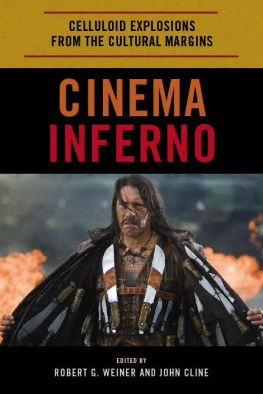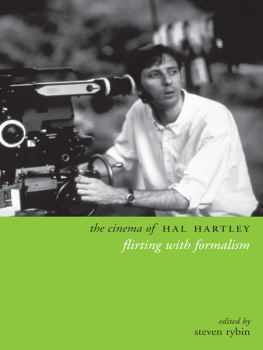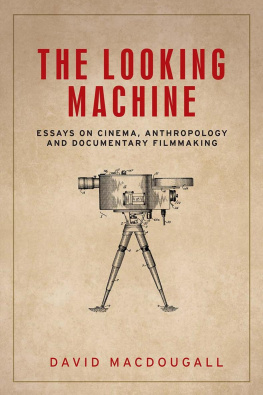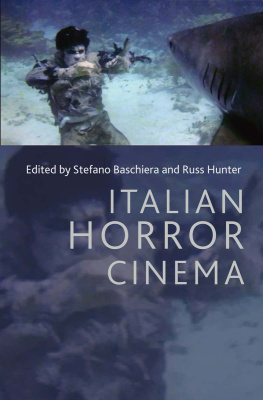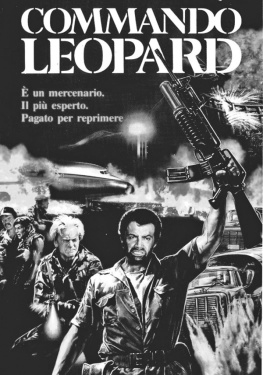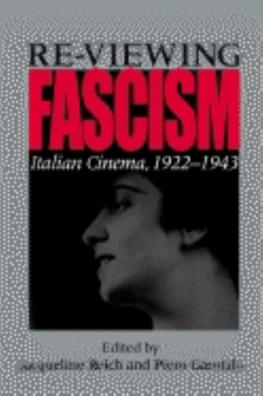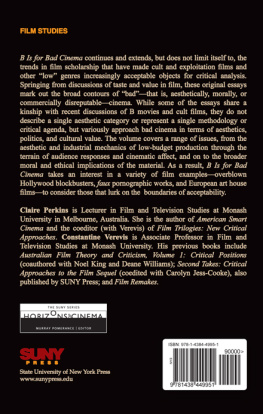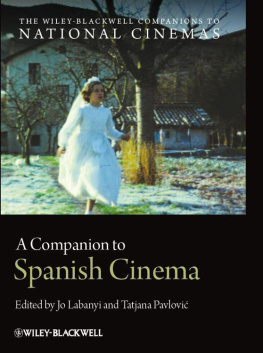The Scarecrow Press, Inc.
Published by Scarecrow Press, Inc.
A wholly owned subsidiary of The Rowman & Littlefield Publishing Group, Inc.
Copyright 2010 by Robert G. Weiner and John Cline
All rights reserved . No part of this book may be reproduced in any form or by any electronic or mechanical means, including information storage and retrieval systems, without written permission from the publisher, except by a reviewer who may quote passages in a review.
Cinema inferno : celluloid explosions from the cultural margins / edited by Robert G. Weiner, John Cline.
p. cm.
Includes bibliographical references and index.
ISBN 978-0-8108-7656-9 (cloth : alk. paper) ISBN 978-0-8108-7657-6 (ebook)
1. Horror filmsHistory and criticism. 2. Thrillers (Motion pictures)History and criticism. 3. Violence in motion pictures. I. Weiner, Robert G., 1966 II. Cline, John.
` The paper used in this publication meets the minimum requirements of American National Standard for Information SciencesPermanence of Paper for Printed Library Materials, ANSI/NISO Z39.48-1992.
Foreword
Mikita Brottman
Anyone reading this book must have a keen interest in horror movies. Chances are youre a fan, like me. In combining academic theory with journalistic, first-person accounts, this book does something very unusual, but in many respects, when it comes to horror, its the only way to go.
The pleasures of horror, I believe, are deeply personal.
If youre a fan, youve probably been asked what it is you find so enjoyable about watching films in which people undergo terrifying ordeals. Most horror film fans have probably spent a long time thinking about this question, and everyone has a slightly different answer, depending on their own experiences. Thats the thing about horroryou cant separate your love of it from who you are.
The first horror film to have a real impact on me was The Exorcist . I was too young to see the film on its first UK release in 1974, but I remember people talking about how scary it was. Id seen old black-and-white horror movies on television, and the idea of a modern horror film intrigued meespecially one that was frightening enough to terrorize grown men . In Britain, the film was always in rerun at repertory theaters because it had such a lurid reputation, and (after the 1984 video nasties act) was banned from sale. I was fourteen when I first saw itit was my first X-rated film. I remember getting the bus to the Gaumont Cinema in Sheffield wearing my mothers fake fur coat, hoping it made me look older. In the underground toilets near the cinema, I changed into a pair of borrowed high heels, applied some lipstick and eye shadow, and gingerly climbed the low steps in front of the movie theater.
The woman at the kiosk barely looked up. She didnt ask to see an ID; she clearly didnt have the slightest interest in how old I was. For some reason, this struck me as disappointing. Maybe part of me was hoping Id get turned away.
Feeling small and afraid in the enormous, virtually empty theater, I started to think I might have bitten off more than I could chew. The very moment the film started, I knew my suspicions were correct. It was the first time I remember being absolutely petrified by a filmso frightened that at one point I thought I wasnt going to be able to handle it; Id have to get out of there. Yet I was frozen to my seat, unable to tear my eyes from the screen.
Since that afternoon, almost thirty years ago now, Ive discovered that plenty of young moviegoers had very similar experiences with the film. Some of their accounts are cataloged at www.houseofhorrors.com/fanspeakexorcist.htm, which is just one among many other sites in which those terrified by The Exorcist can share their memories of this formative rite of passage:
No movie has ever come close to creating the personal terror I felt after seeingand becoming obsessed with The Exorcist .
The movie ruined me to this day. I had recurring nightmares for years after and could not hear the creepy Tubular Bells anywhere without totally freaking out.
I watched the Exorcist again last night and shit myself all over again.
The first time I saw it was in snatches through a gap in the door when I was a child and each scene that I caught was imprinted like a photograph in my memory. I bought the new version with all the extra bits in on DVD 2 years ago, but have only watched it twice since as I cant watch it alone and its hard to find people who will sit through it with me.
I have seen this incredibly tense, stomach-twisting film twice, once in the cinema, then on video. I think one of its most compelling attributes is the fact that it has been hyped so much, but when you do go and see it, it is everything you thought it would be. Claustrophobic, atmospheric, uncomfortable, grimy.
I was about nine years old when I first watched The Exorcist , and it scared the hell out of me but I couldnt stop watching it. It was the first horror film Id seen, and I loved it.
This movie scared the living daylights out of me, and even though I am grown and married, I cant forget the stark, hot terror that flooded through me the first time I saw the movie.
When I was 10 I made the mistake of watching The Exorcist and was traumatized. It scared me like no other movie had ever done, then or since. To this day, the reverse English scene still tingles my neck hairs.
The first time I watched it was 10 years ago, I was 13 then. It left such deep memories I told myself that I would never see it again. The fear got really bad. I used to sleep in a room by myself, on a king size bed. I woke up in the middle of the night sometimes and saw her sleeping beside me... her eyes... staring down at me. I couldnt even pray.
When I saw it, I was a wreck for about a year afterwards. I pondered it for a very long time, trying to figure out why it had disturbed me so much.... You couldnt put a gun to my head and make me watch it again.
Like the moviegoer above, Ive also spent a lot of time thinking about why this particular film shook me up so much, but, unlike him or her, Ive watched it so many times over in the last thirty years that, in some respects, its difficult to understand why I originally found it so frightening. It was a combination of many things, I think. I was definitely anticipating something scary, but I had no idea what form that terror would take. I wasnt expecting the long build-up to the possession scenes, the nerve-wracking soundtrack, or the long drain on my emotions. I certainly wasnt prepared for the terrifying images that seemed to flash into my mind then disappear so quickly, I couldnt be sure whether Id imagined them or not.
Much of the films horror, I now realize, takes place subliminally, not in full view, and so were not quite conscious of it. In many of the scenes, in fact, theres nothing but the free-floating anxiety that comes from endless, grinding anticipation. Every time the camera slid up those stairs in the MacNeills house and down the hallway toward the door of Regans bedroom, I remember thinking I was going to pass out with terror. Still, even though a lot of the horror is subliminal, we do see some disturbing images in The Exorcist most notably what one of the moviegoers quoted above refers to as her . To me, the most horrifying image in the filmthe image I saw for many nights afterward, whenever I closed my eyeswas Regan MacNeill transformed beyond recognition into a terrifying demon with guttural voice, filthy mouth, twisted body, and preternatural strength. To make matters even scarier, unlike the old black-and-white horror films Id seen on television, The Exorcist was set in a recognizable world that had much in common with the one I lived in. I was immediately absorbed in the narrative because I believed in the world it depicted. The demon possession scenes seemed to suggest that a shocking rupture could happen in the fabric of even an ordinary life like mine.

